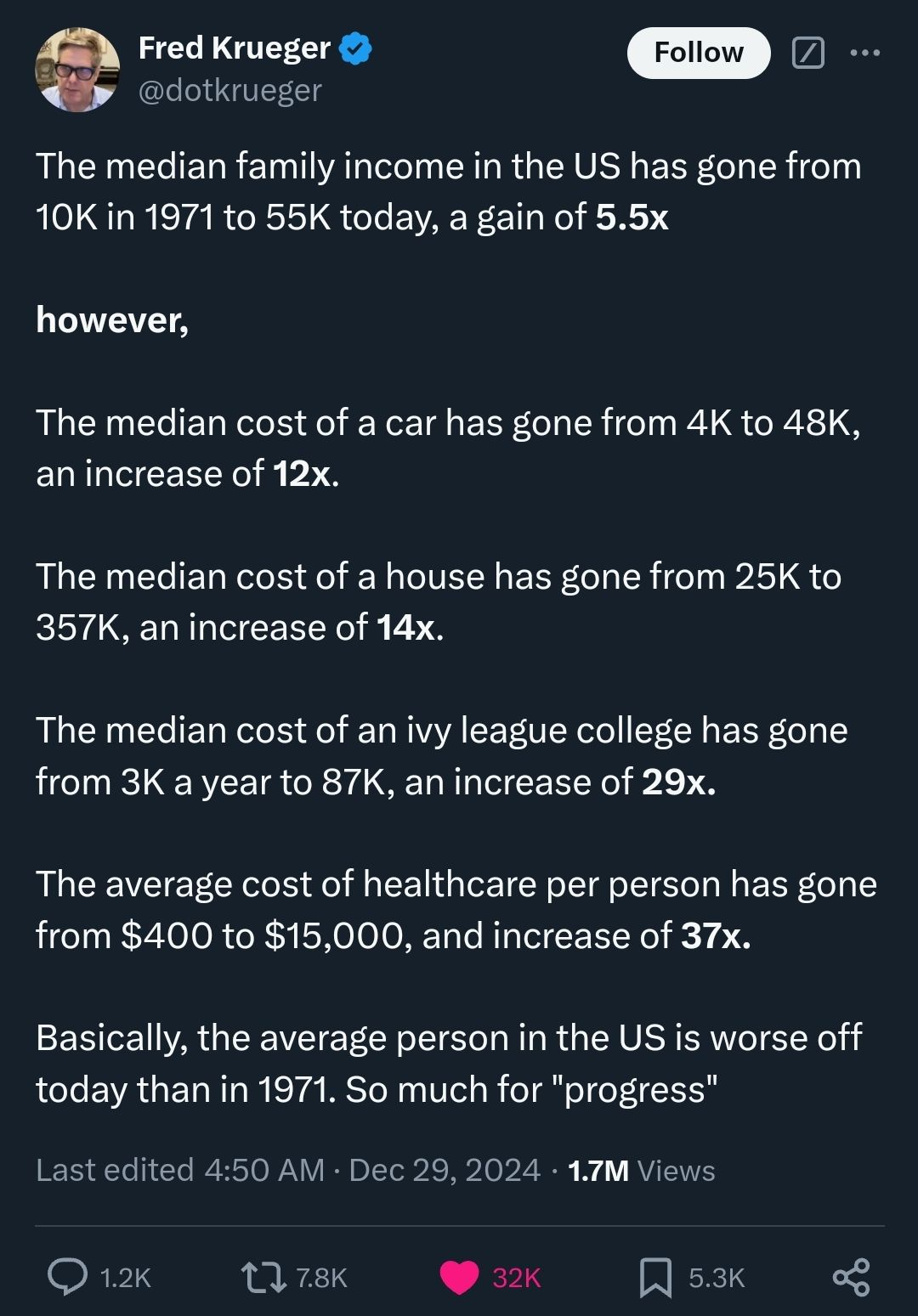this post was submitted on 30 Dec 2024
1511 points (98.8% liked)
Microblog Memes
6469 readers
2097 users here now
A place to share screenshots of Microblog posts, whether from Mastodon, tumblr, ~~Twitter~~ X, KBin, Threads or elsewhere.
Created as an evolution of White People Twitter and other tweet-capture subreddits.
Rules:
- Please put at least one word relevant to the post in the post title.
- Be nice.
- No advertising, brand promotion or guerilla marketing.
- Posters are encouraged to link to the toot or tweet etc in the description of posts.
Related communities:
founded 2 years ago
MODERATORS
you are viewing a single comment's thread
view the rest of the comments
view the rest of the comments

The statement oversimplifies or lacks nuance in certain areas. Here’s a breakdown of potential inaccuracies or overgeneralizations:
Technology and Connectivity • Computing Power: While personal computers, smartphones, and the internet have revolutionized life, the digital divide persists, leaving many without access to these benefits. • Global Connectivity: The internet does foster collaboration, but it has also enabled misinformation, cybercrime, and increased surveillance, which are significant downsides. • Medical Technology: While advances have improved healthcare, access to such technologies remains inequitable, particularly in low-income regions.
Healthcare and Longevity • Life Expectancy: While global life expectancy has risen, it doesn’t account for disparities between high-income and low-income countries, where life expectancy gains are less pronounced. • Disease Control: Smallpox has been eradicated, but other diseases (e.g., malaria, tuberculosis) still pose major threats, especially in resource-limited areas. Progress on HIV/AIDS and cancer varies greatly depending on access to treatment.
Social Progress • Civil Rights: While progress has been made, setbacks and inequalities remain pervasive. For instance, systemic racism, gender inequality, and LGBTQ+ discrimination continue to be significant issues in many regions. • Global Awareness: Awareness has increased, but this doesn’t always translate into action or consensus. For example, awareness of climate change is high, yet global emissions continue to rise.
Education • Access: Literacy rates and education access have improved, but quality disparities and barriers (e.g., cost, conflict, cultural resistance) remain significant in many parts of the world. • Digital Learning: Online education is a major advancement, but it has also exacerbated inequalities for those without reliable internet or technology access.
Economic Development • Global Poverty Reduction: Extreme poverty has declined, but inequality has increased within and between countries. Many people remain in “near-poverty” conditions, vulnerable to economic shocks. • Global Trade: While trade has raised living standards, it has also contributed to economic disparities, labor exploitation, and environmental degradation in some regions.
Environmental Awareness • Clean Energy: Renewable energy technologies have advanced, but fossil fuels still dominate the global energy mix, and transitioning to renewables is uneven across countries. • Global Efforts: International agreements like the Paris Accord are important, but their implementation has been inconsistent, with some countries failing to meet their commitments.
Quality of Life • Convenience: Modern conveniences have simplified life for many, but they have also created new challenges, such as privacy concerns, waste generation, and the gig economy’s precariousness. • Entertainment: Access to diverse entertainment is widespread, but it has also raised concerns about overconsumption, digital addiction, and the homogenization of culture.
Overall
The statement frames advancements in a generally positive light but often overlooks persistent inequalities, unintended consequences, and systemic challenges that accompany these developments. A more balanced perspective would acknowledge these complexities.